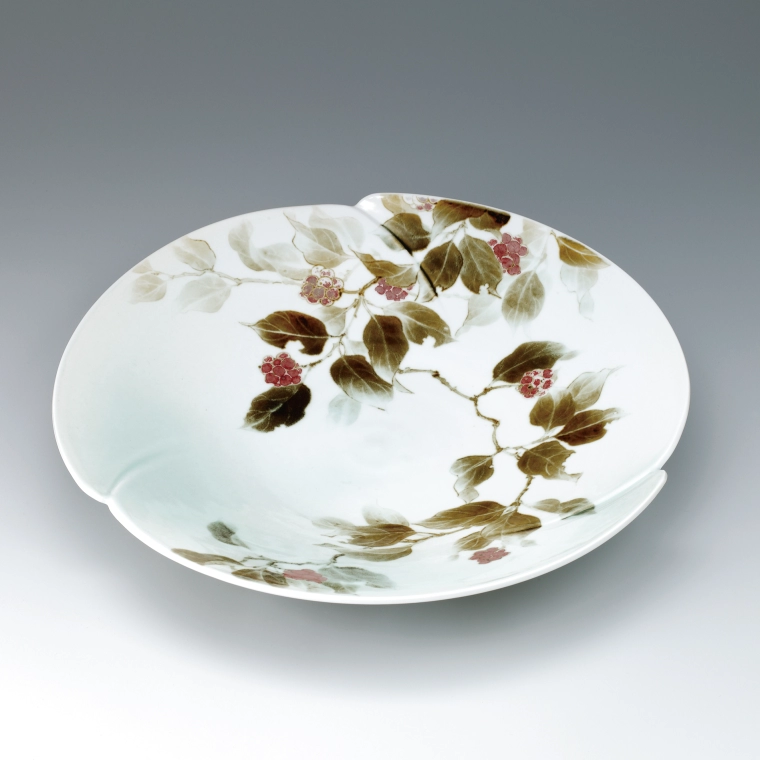Large dish with binankazura design.
H 11.5 x W 50.0 x D 50.0 cm,Year.2013Shiyo Sakai
1979 -- Ceramics
-
Price Range
$1,000 - 1,500
Info
The prices of the artworks on Gallery Japan are determined by the artists themselves and are published directly on the website.
close - Awards at Japan Kōgei Assoc. Exhibitions : 3
Description
-
CategoryCeramics
-
DimensionsH 11.5 x W 50.0 x D 50.0 cm
-
Year presented2013
-
RarityUnique
Techniques Used
Blue underglaze
Blue and white porcelain (sometsuke) is made by painting blue underglaze decorations on white bisque-fired pottery using a cobalt-rich pigment known as zaffer (gosu). The piece is then coated with a transparent glaze and fired. This technique for making blue and white porcelain has been used in China since around the twelfth century during the Yuan Dynasty.
Iron underglaze
Iron underglaze decorations (tetsu-e) are achieved by painting designs in a pigment containing iron oxide. The piece is then coated with a transparent glaze and fired at a high temperature. This basic method of ceramic underglaze decoration relies on the color changes displayed by iron oxide when it is exposed to heat.
Pale blue porcelain
Pale-blue celadon porcelain (seihakuji, known as qingbai in Chinese) is made from porcelain clay derived from white stone. The porcelain is bisque fired and then covered with a glaze containing minute amounts of iron, which turns a blue tint when fired. Celadon originated in China. White porcelain made with a glaze that turns transparent when fired is called hakuji (“white porcelain”), while pieces made from porcelain clay containing iron and coated in a glaze that turns a bluish-green when fired is called seiji (“celadon” or “green ware”).
Selected exhibitions
- The 60th Japan Traditional Kōgei Exhibition (2013)
- Selected
Please feel free to contact us to commission work, check artworks available for purchase etc.

